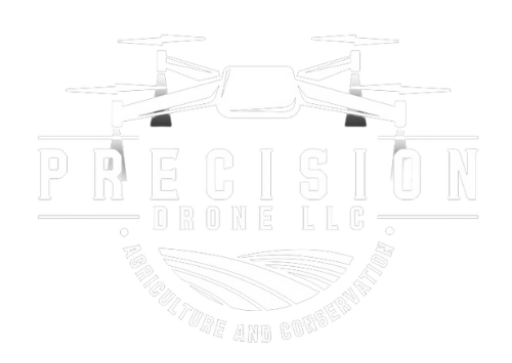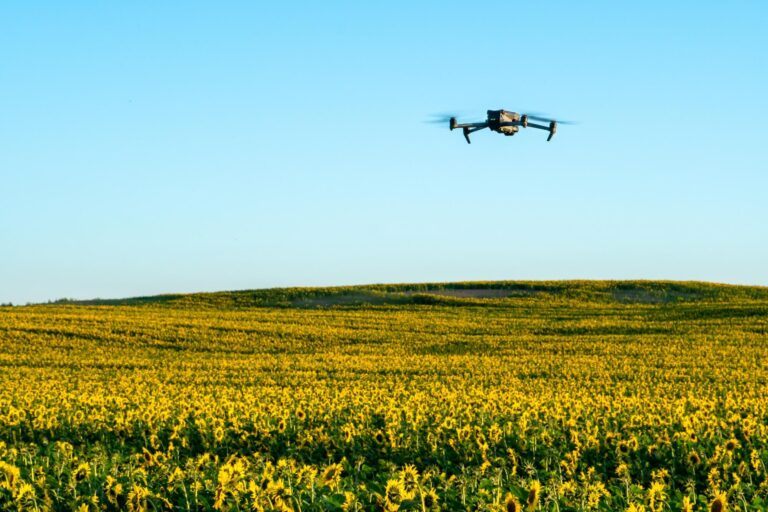The Future of Conservation: Utilizing Precision Drone Services for Environmental Management
In an era where technological advancements redefine our interactions with the environment, Precision Drone LLC stands at the forefront of revolutionizing conservation efforts through sophisticated aerial solutions. By harnessing the power of cutting-edge drone technology, we are transforming how natural resources are managed and monitored, offering innovative approaches to environmental preservation. Our precision drone services provide unparalleled accuracy in tasks ranging from comprehensive surveying to targeted applications, ensuring that both agricultural and conservation goals are met with efficiency and sustainability. As we delve into the future of environmental management, discover how these groundbreaking services are shaping a more sustainable world, one flight at a time.
Introduction to Precision Drone Services
Precision Drone Services have become a pivotal force in modern environmental management. As technology evolves, its role in maintaining and enhancing natural ecosystems cannot be overstated.
Revolutionizing Environmental Management
Drones have redefined how we approach environmental management. Equipped with advanced sensors and cameras, drones offer a bird’s eye view of landscapes. This elevated perspective allows for precise monitoring of ecosystems, which is crucial in addressing environmental challenges.
Drones provide real-time data, enabling quick responses to issues like deforestation or habitat destruction. For instance, a drone can cover large areas swiftly, capturing detailed images that highlight areas of concern. These insights lead to informed decision-making.
Moreover, drones reduce the need for human intervention in hazardous areas. By surveying from the sky, they minimize the environmental footprint. This not only protects natural resources but also ensures the safety of personnel involved in conservation efforts.
Importance of Drone Technology in Conservation
Drone technology is invaluable in conservation. It provides a means to monitor wildlife and habitats efficiently. Drones can track animal movements, helping to understand migration patterns and population dynamics.
Conservationists benefit from drones’ ability to access remote areas. Traditional methods may struggle in such environments, but drones can navigate them effortlessly. This ensures comprehensive data collection.
Additionally, drones help in combating illegal activities. For example, poaching can be deterred through aerial surveillance, as drones can cover vast regions quickly. This real-time monitoring helps authorities take immediate action, preserving endangered species.
In summary, the role of drones in conservation is multifaceted. They offer enhanced monitoring capabilities, access to remote areas, and an effective deterrent against illegal activities. These attributes make drones indispensable in the fight for environmental preservation.
Advancements in Drone Technology
With rapid technological advancements, drones are becoming more sophisticated, offering new possibilities for environmental management.
Precision Monitoring and Data Collection
Drones excel in precision monitoring and data collection. Equipped with high-resolution cameras and sensors, they capture detailed images and data. This precision is crucial for tracking changes in environments over time.
Real-time data collection is a significant advantage. Drones can fly over an area, collect data, and transmit it back immediately. This allows for timely analysis and decision-making, which is essential in dynamic environments.
Furthermore, drones can be fitted with various sensors. From thermal to multispectral imaging, these sensors provide insights into factors like vegetation health and soil conditions. This data helps in assessing environmental health and planning interventions.
Overall, drones’ precision monitoring capabilities ensure that environmental management is based on accurate, up-to-date information. This leads to more effective conservation strategies and outcomes.
Targeted Applications and Their Benefits
Drones offer targeted applications that benefit environmental management. One such application is precision agriculture, where drones optimize resource use. By targeting specific areas, they ensure resources like water and fertilizers are used efficiently.
This targeted approach reduces waste and minimizes environmental impact. For instance, drones can apply pesticides only where needed, reducing chemical use. This precision helps maintain ecological balance and protects non-target species.
Additionally, drones can monitor specific features, like riverbanks or forest edges. This targeted surveillance helps in detecting changes early, allowing timely interventions. Early detection is critical in preventing environmental degradation.
In essence, the targeted applications of drones enhance resource efficiency and early detection. These benefits contribute significantly to sustainable environmental management.
Applications in Agriculture and Conservation
The integration of drone technology in agriculture and conservation has opened new avenues for efficiency and sustainability.
Optimizing Crop Health with Drones
Drones play a crucial role in optimizing crop health. They provide detailed aerial views of fields, helping to identify areas needing attention. With multispectral imaging, drones assess plant health based on light reflection patterns.
This data allows farmers to make informed decisions. For instance, they can identify areas with nutrient deficiencies or pest infestations. By targeting these specific areas, resources are used more efficiently, enhancing crop yields.
Furthermore, drones can monitor crop growth over time. This temporal data helps in predicting yields and planning harvests. With precise information at their disposal, farmers can optimize their practices for better outcomes.
Overall, drones provide a comprehensive view of crop health, enabling precision agriculture. This leads to increased productivity and sustainability in farming.
Managing Natural Resources Effectively
In conservation, drones are instrumental in managing natural resources. They offer a unique perspective on landscapes, helping to monitor changes over time. This long-term data is invaluable for resource management.
Drones can cover large areas in a short time, making them ideal for monitoring resources like forests and water bodies. Their ability to provide real-time updates ensures that any issues can be addressed promptly.
Moreover, drones help in mapping resources accurately. High-resolution images and data allow for detailed mapping, which is crucial for effective management. This ensures that conservation efforts are targeted and effective.
In summary, drones enhance the management of natural resources by providing detailed data and monitoring capabilities. This leads to more informed conservation strategies and better resource utilization.
Challenges and Solutions
While drones offer numerous benefits, their integration into environmental management comes with challenges that need addressing.
Overcoming Technological Barriers
One challenge is overcoming technological barriers. Drones rely on advanced technology that requires skilled operation. Training personnel to operate drones efficiently is crucial for maximizing their benefits.
Battery life is another concern. Drones with limited flight time may not cover large areas effectively. Developing longer-lasting batteries is essential for extended operations.
Software integration poses challenges as well. Ensuring that drones can communicate with existing systems is crucial for seamless operations. This requires developing compatible software solutions.
In addressing these barriers, training programs and technological innovations are key. By investing in these areas, the full potential of drones can be realized in environmental management.
Addressing Cost and Agriculture Drone Services Pricing
Another challenge is the cost associated with drone services. Agriculture drone services pricing can be high, making it inaccessible to some. Finding ways to reduce costs is essential for wider adoption.
One solution is offering subsidized programs to encourage drone use. This can help smaller organizations access drone services and benefit from their capabilities.
Collaborations with technology providers can also help. Joint ventures can lead to cost-sharing, reducing the financial burden on individual organizations. This makes drone services more affordable.
To summarize, addressing cost challenges requires a combination of subsidies and collaborations. These strategies can enhance the accessibility of drone services in environmental management.
The Future of Environmental Management
The future of environmental management is bright, with innovations in drone technology leading the way toward sustainability.
Innovations on the Horizon
Innovations in drone technology are paving the way for more efficient environmental management. Autonomous drones are one such innovation, capable of operating without human intervention. This increases efficiency and reduces labor costs.
Another innovation is the integration of artificial intelligence. AI-powered drones can analyze data in real-time, providing instant insights. This speeds up decision-making processes and enhances response times.
Drones are also becoming more versatile. With advancements in sensor technology, they can carry out a wider range of tasks, from mapping to wildlife monitoring. This versatility makes them indispensable tools in environmental management.
Looking ahead, these innovations will continue to enhance the capabilities of drones, leading to more effective and sustainable environmental management strategies.
The Role of Agricultural Drone Service in Sustainability
Agricultural drone services play a significant role in promoting sustainability. They enable precision farming, reducing resource use and environmental impact. By optimizing inputs, drones help in reducing waste and enhancing productivity.
Drones also facilitate sustainable practices by providing detailed data on field conditions. This information helps farmers adopt practices that conserve resources and protect the environment.
Furthermore, drones support biodiversity by minimizing chemical use. Targeted applications reduce the risk of harming non-target species, maintaining ecological balance. This is crucial for long-term sustainability.
In conclusion, agricultural drone services contribute significantly to sustainability. They enhance efficiency, promote resource conservation, and support biodiversity, making them essential tools for sustainable environmental management.







